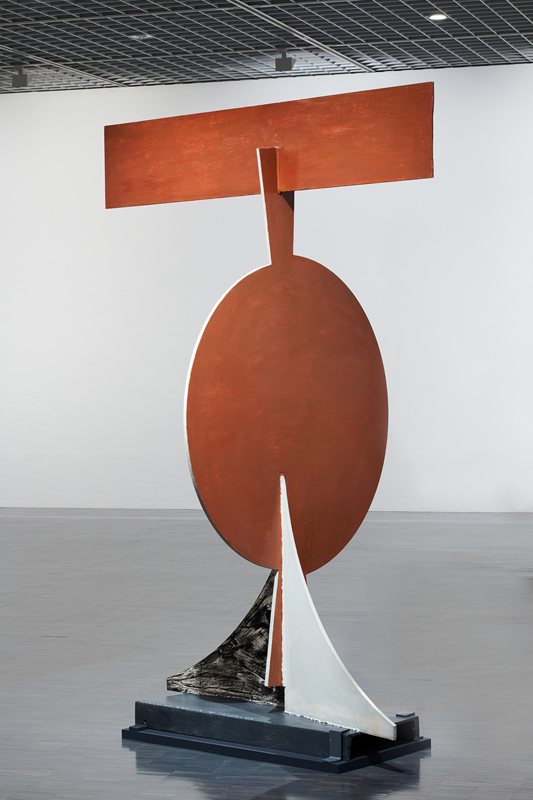Watch, Read, Listen
Recent Additions to the Collection MOMAT Collection Newsletter of the National Museum of Modern Art, Tokyo David Smith, Circle IV, 1962
Back
Circle IV
1962
Painted iron
Height 215.9cm, width 152.5cm, depth 107.0cm
Purchased FY 2017
Photograph by Ootani Ichiro
Last year the museum acquired a sculpture by David Smith from the Circle series, which consists of five works produced in 1962 and 1963.
Smith was born in the US state of Indiana, and in between taking courses at several universities, worked on the assembly line of an automobile factory. He moved to New York in 1926 to study at the Art Students League. Made with the industrial materials of iron and stainless steel yet marked by a hand-constructed, free-form quality, Smith’s work is considered indispensable to any discussion of 20th-century sculpture.
Smith is an artist known for working in series (however, he eschewed the use of casting, and the concept of “editions” is absent from his oeuvre). Surely the best-known of these series is Cubi (1961-65), made with burnished stainless steel. The works in this series, which consist of rectangular prisms, cubes and cylinders, were highly praised by modernist advocates, i.e. art theorists, oriented toward purity and abstraction of form.
From this perspective the Circle series seems to be an exception to the rule, but matters are not so simple. During the 1960s Smith also produced the Zig series consisting of iron plates painted in flat, matte and often monochromatic color. In other words, incorporating colors and planes into sculpture must have been an important concern for the artist.
The Circle series is characterized by incorporation of a circle, a highly self-enclosed form even compared to other planar shapes, and by the use of multiple colors in a single work. Among them, this work (IV) is exceptional in terms of its distinctive brushstrokes, its lack of apertures in the circle (in I, II, III, and V there are circular holes inside the larger circle, although they differ in size), and clear introduction of multi-directionality to control the sense of movement.
In fact, this work is thought to have been made before the others in the series. Smith was known to assign numbers to works in series regardless of the order in which they were actually produced, and this series is no exception. Incidentally, I, II and III are currently in the collection of the National Gallery of Art, and V is in the JP Morgan Chase Art Collection. This work remained in Smith’s possession and then in that of his estate, but MOMAT was able to purchase it, a cause for celebration in that there are virtually no opportunities to see Smith’s work in person at museums in Asia.
(Gendai no me, Newsletter of The National Museum of Modern Art, Tokyo No.629)
Release date :


